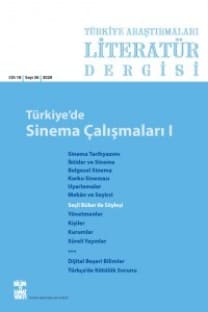Osmanlı Dönemi İstanbul Nüfus Tarihi
İstanbul, kurulduğu tarihten beri istisnai bir şehir olma özelliğini korumuştur. İstanbul nüfusunu inceleyen çalışmaların değerlendirildiği bu çalışmada önce yöntem ve yaklaşım konusu ele alınmıştır. Osmanlı Devleti taşradaki vergi potansiyelini tespit ve bunların tevzi için çok sayıda sayım yapmış olmasına rağmen İstanbul şehir için aynı tespiti yapmak mümkün değildir. Bu çalışmada fetih öncesi ve sonrası İstanbul nüfusunu tahmin, dolaylı çıkarım veya yorumlayarak sayılara döken çalışmalar ile doğrudan sayımlar ışığında inceleyen belli başlı çalışmalar değerlendirilmiştir. Bu sebeple XVI-XIX. yüzyıllar arası kent nüfusu hakkında birtakım varsayım ya da tahminlerin ötesinde bir rakam söylemek oldukça zordur. Güvenilir verilere dayalı araştırmalar XIX. yüzyıl öncesi kent nüfusu için söz konusu değildir. XVI. ve XVII. yüzyıl için verilen bazı rakamların da revize edilmesi gerekir. XIX. yüzyılda yapılan sayımlar ve sonuçları üzerine verimli çalışmalar yapılmıştır. Tüm bu çalışmalarda ortaya konulan kavram, yöntem, sorun, bulgu ve rakamlar karşılaştırmalı olarak ele alınmış, her biri hakkında olumlu, eksik ya da tevile muhtaç yönleriyle alakalı bazı tespitler yapılmıştır.
Anahtar Kelimeler:
İstanbul, Nüfus, İstanbul nüfusu, İstanbul’a göç, İskân, XV-XIX. yüzyıllar, Tarihsel nüfusbilim, Nüfus tarihi
Demographic History of Istanbul in the Ottoman Period
Ever since its foundation, Istanbul has stood out as an exceptional city. In this study, where we evaluate the studies on Istanbul’s population, at first the method and approach is discussed. Although the provinces of the Ottoman state were subjected to many surveys for determining and allocating tax resources, it is not possible to make the same observation for the city of Istanbul. This study examines those studies investigating the population of Istanbul before and after its conquest through estimations and indirect inference or interpretations based on numbers and those studies based directly on the tax surveys or tahrirs. For this reason, it is difficult to say anything about the city population between the 16th and the 19th centuries except for some estimates and assumptions. We do not have at our disposal reliable studies on the city population prior to the 19th century. There is also the need to revise some figures given for the 16th and 17th centuries. There are fruitful studies on the surveys and counts executed in the 19th century. Here we deal with the concepts, methods, problems, findings and figures put forward in these studies in a comparative way and make some comments on their positive, incomplete aspects as well as those aspects requiring explanation.
Keywords:
Istanbul, Population surveys, Population of Istanbul, Immigration to Istanbul, Resettlement, 15th-19th centuries, Historical demography, Population history,
___
- Alexandrescu-Dersca Bulgaru, Marie M., “La politique démographique des Sultans à Istanbul (1453-1496)”, Revue des Etudes du Sud-Est Européen, 1990, 28, s. 45-56.
- Artan, Tülay (ed.), 18. Yüzyıl Kadı Sicilleri Işığında Eyüp’te Sosyal Yaşam, İstanbul: Tarih Vakfı Yurt Yayınları, 1998.
- Behar, Cem, “Nuptility and marriage patterns in Istanbul (1885-1940), Boğaziçi University Papers (85/04), İstanbul, 1985.
- Behar, Cem, “Evidence on fertility decline in Istanbul (1885-1940), Boğaziçi University Papers (87/07), İstanbul, 1987.
- Behar, Cem, “Polygyny in Istanbul (1885-1926)”, Middle East Studies (Londra), c. XXVII, Temmuz 1991, s. 477-486.
- Behar, Cem, “An estimate of adult mortality in Istanbul in the second half of th Nineteenth century”, Toplum ve Ekonomi, Ekim 1994, sy. 7, s. 95-107.
- Duben, Alen & Cem Behar, “Understanding muslim households and families in late Ottoman Istanbul”, Journal of Family History, 1990, 15/1, s. 71-86.
- Duben, Alen, “Osmanlı İstanbulu’nda evlilik ve hane kurma”, Toplum ve Bilim, 1988, sy. 42, s. 27-42.
- Faroqhi, Suraiya Osmanlı’da Kentler ve Kentliler, İstanbul: Tarih Vakfı Yurt Yayınları, 1993.
- Faroqhi, Suraiya, “Migration into Eighteenth-century greater Istanbul as reflected in the kadı registers of Eyup”, Turcica, 1998, 30, s. 163-183.
- Heyd, Uriel, “The Jewish communities of Istanbul in the seventeenth century”, Oriens, c. 6, no. 2 (31 Aralık 1953), s. 299-314.
- Karpat, Kemal, “The social and economic transformation of Istanbul in the Nineteenth century”, Bulletin de l’Association Internationale d’Etudes du Sud-Est Européen, 1974, XII/2, s. 267-308.
- Karpat, Kemal, “Ottoman population records and the census of 1881/82-1893”, International Journal of Middle East Studies, 1978, 9/2, s. 237-274.
- Osman Nuri [Ergin], (1925), “İstanbul’un nüfusu-3”, Şehremaneti Mecmuası, Mayıs 1341 (1925), c. 1, sy. 9, s. 225-229.
- Osman Nuri [Ergin], “İstanbul’un fethinden sonra şehir nasıl imar ve iskân edildi?”, Resimli Tarih Mecmuası, 1953, sy. 41, s. 2352-2363.
- Panzac, Daniel, (1997), Osmanlı İmparatorluğu’nda Veba (1700-1850), (çev. Serap Yılmaz), İstanbul: Tarih Vakfı Yurt Yayınları, 1997. Sakin, Orhan, Tarihsel Kaynaklarıyla İstanbul Depremleri, İstanbul: Kitabevi Yayınları, 2002.
- Shaw, Stanford J., “Ottoman census system and population, 1831-1914”, International Journal of Middle East Studies, 1978, 9/3, s. 325-338.
- Shaw, Stanford J., “The population of Istanbul in the nineteenth century”, International Journal of Middle East Studies, c. 10, no. 2, Mayıs 1979, s. 265-277; Ayrıca, İstanbul Üniversitesi Edebiyat Fakültesi Tarih Dergisi Prof. Dr. İ. Hakkı Uzunçarşılı Hatıra Sayısı, 1979, sy. 32, s. 403-414.
- Toprak, Zafer, “La population d’Istanbul dans les premières années de la République”, Travaux et Recherches en Turquie (1982), Louvain, Peeters, 1983, s. 63-70.
- Toprak, Zafer, “Tarihsel nüfusbilim açısından İstanbul’un nüfusu ve toplumsal topografyası”, Toplum ve Ekonomi, Nisan 1992/3, s.109-120.
- Yazan, Ümit Meriç, “Bir asır boyunca (1840-1940) İstanbul şehrinin nüfusunda meydana gelen değişmelerin değerlendirilmesi”, Tarih Boyunca İstanbul Semineri (Bildiriler), İstanbul: İstanbul Üniversitesi Edebiyat Fakültesi Yayınları, 1989, s. 59-74.
- ISSN: 1303-9369
- Başlangıç: 2003
- Yayıncı: Bilim ve Sanat Vakfı
Sayıdaki Diğer Makaleler
İstanbul’un Tarihsel Kaynakları Olarak Seyahatnameler
İstanbul Kütüphaneleri Tarihine Dair Araştırmalar
Tanzimattan Cumhuriyete Gündelik Hayatın Tarihi Açısından İstanbul Hatıratları
Cumhuriyet Dönemi İstanbul Nüfusu Literatürü Üzerine
Mehmet Zeydin YILDIZ, Suvat PARİN
İstanbul’un Fethine Dair Literatür Değerlendirmesi
Osmanlı İstanbul’unda Merasim ve Teşrifata Dair Kaynaklar
Vakıf İstibdal Kayıtları, İstanbul’da Barınma Kültürü ve Kent Yapısına Dair Neler Sunar?
Tanzimat Döneminde Tarihî Yarımada: Tercihler, Yaklaşımlar, Görünümler
